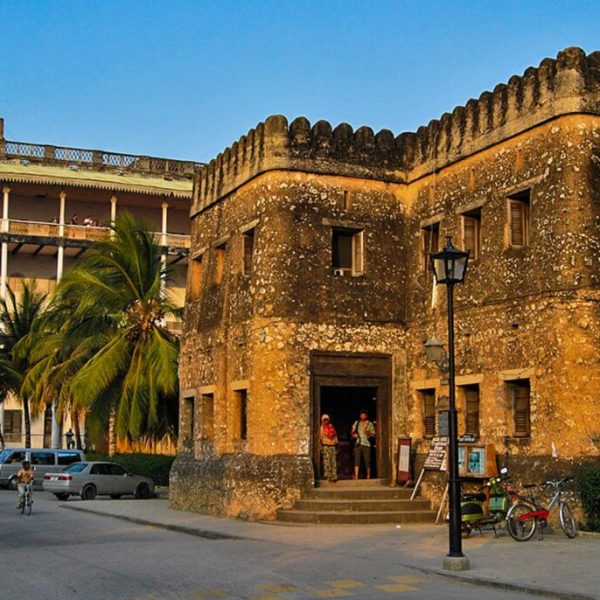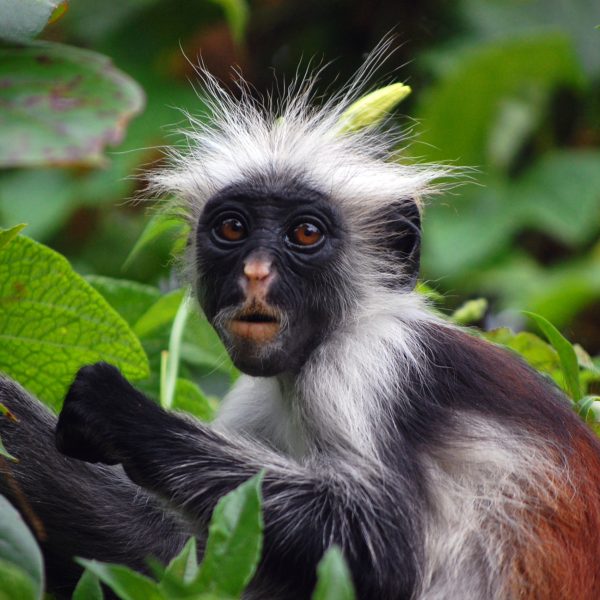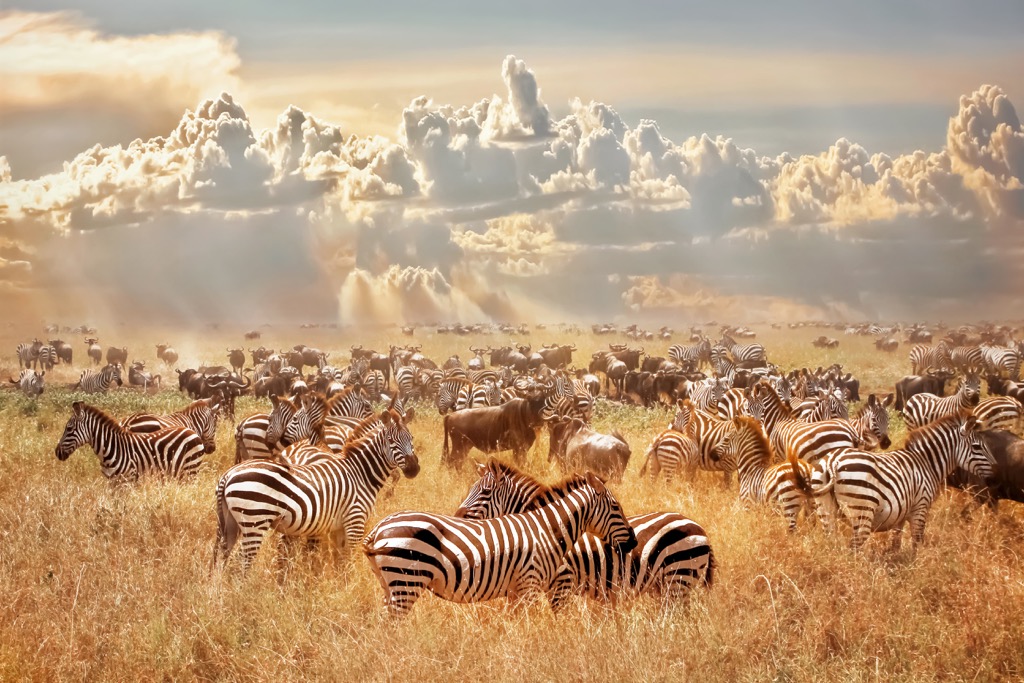Zanzibar
Zanzibar, often referred to as the “Spice Island,” is a semi-autonomous region of Tanzania, located off the coast of East Africa. Known for its rich history, stunning beaches, vibrant culture, and abundant spices, Zanzibar is a paradise that offers something for every traveler. Let’s explore everything you need to know about this captivating island.

Geography and Location
Zanzibar is an archipelago located in the Indian Ocean, about 25 miles off the Tanzanian coast. It consists of several islands, with the two largest being Unguja (commonly referred to as Zanzibar Island) and Pemba Island. The island is famous for its lush forests, beautiful coral reefs, and tranquil shores. Zanzibar enjoys a tropical climate with warm temperatures year-round. Its coastal location makes it a haven for marine life, and its dense forests are home to unique species like the Zanzibar Red Banana.
A Storied History
Zanzibar has a fascinating history shaped by centuries of trade, colonialism, and cultural exchange. The island was once a major center of the spice trade and a crucial link in the East African slave trade. It was ruled by various powers, including the Portuguese, Omanis, and the British. The most significant historical period was when the Sultanate of Oman controlled Zanzibar in the 17th century, making it a key player in the spice trade. This period also influenced Zanzibar’s architectural style, including the iconic Stone Town, a UNESCO World Heritage site. Zanzibar’s political landscape changed dramatically in the 20th century, with the island becoming part of Tanzania following the Zanzibar Revolution in 1964.
Culture and Traditions
Zanzibar’s culture is a blend of African, Arab, Indian, and European influences, creating a unique, rich heritage. The island’s traditional music, Taarab, is a fusion of Swahili, Arab, Indian, and Western sounds that tells the stories of the island’s diverse past. Zanzibar’s Swahili culture is celebrated through art, dance, and vibrant festivals. The island’s population is predominantly Muslim, and Islamic practices and festivals, such as Eid al-Fitr and Ramadan, are integral to the local way of life. The warm hospitality of the Zanzibari people adds to the welcoming nature of the island.
Top Attractions in Zanzibar

Stone Town: The Heart of Zanzibar
Stone Town, the historic capital of Zanzibar, is an intricate maze of narrow alleys, ancient mosques, and grand palaces. Its architecture reflects the island’s multicultural influences, with ornately carved doors, coral stone houses, and towering minarets. Must-visit spots in Stone Town include:
- House of Wonders: Zanzibar’s largest palace and a former royal residence.
- Freddie Mercury’s House: The birthplace of the iconic Queen frontman.
- Forodhani Gardens: A lively spot to sample local food, especially Zanzibar’s famous Zanzibar Pizza.
- Old Fort: A historic fort built by the Portuguese and later used by the Omanis.
Beaches and Resorts: A Tropical Paradise

Zanzibar is renowned for its white-sand beaches, clear turquoise waters, and luxury resorts. Whether you’re looking to relax, dive, or explore, the island’s beaches are perfect for any traveler.
- Nungwi Beach: Famous for its vibrant atmosphere and water sports.
- Kendwa Beach: Known for its clear waters and peaceful surroundings.
- Paje Beach: A kite-surfing hotspot, ideal for adventure lovers.
- Mnemba Island: A private island offering pristine beaches and luxury accommodations.
Spice Tours: A Sensory Journey

Zanzibar’s spice plantations are world-renowned, and a spice tour is an essential experience. These tours take you through lush plantations where you’ll learn about and taste fresh spices like cinnamon, cloves, vanilla, and nutmeg. The spice farms offer a sensory journey, with visitors able to touch, smell, and taste the different spices that have earned Zanzibar its reputation as the “Spice Island.”
Zanzibar’s Unique Wildlife

While Zanzibar is best known for its cultural and historical heritage, it also boasts an array of unique wildlife.
- Zanzibar Red Colobus Monkey: An endangered species found only on the island.
- Jozani Forest: Home to the red colobus monkeys and a variety of bird species.
- Marine Life: Zanzibar is surrounded by coral reefs teeming with marine species like dolphins, sea turtles, and vibrant fish.
Cuisine of Zanzibar: A Taste of the Island

Zanzibar’s cuisine is as diverse as its culture. The food is a fusion of African, Arab, and Indian influences. Key dishes to try include:
- Zanzibar Pizza: A unique street food snack with fillings ranging from meat to fruits.
- Urojo (Zanzibar Mix): A spicy soup with a combination of potatoes, fried dough, and meat.
- Biryani: an aromatic rice dish influenced by Indian spices.
- Samosas: Crispy pastries filled with meat or vegetables.
- Seafood: Zanzibar is famous for its fresh seafood, including crab, prawns, and lobster.
Best Time to Visit
The best time to visit Zanzibar is during the dry seasons, which run from June to October and December to February. The weather is warm and sunny, perfect for exploring and relaxing on the beach. The island is also less humid during these months, making outdoor activities more enjoyable. Avoid visiting during the rainy seasons (March to May), as the weather can be unpredictable and some attractions may be less accessible.
Travel Tips and Practical Information
- Currency: Zanzibar’s currency is the Tanzanian Shilling (TZS). US dollars are widely accepted in tourist areas.
- Language: Swahili is the main language, though English is also spoken.
- Visas: Most visitors require a visa to enter Tanzania. Visas can be obtained on arrival or through Tanzanian embassies.
- Dress Code: Zanzibar is a conservative Muslim island, so it’s important to dress modestly, especially when visiting religious sites.
Zanzibar’s Conservation Efforts
Zanzibar is home to several conservation initiatives aimed at preserving its natural beauty and unique biodiversity. The Zanzibar Conservation Fund works on protecting the island’s coral reefs, forests, and endangered species, like the Zanzibar Red Colobus monkey. The island also supports marine conservation projects focused on preserving its pristine beaches and sea turtles.
How to Get There
Zanzibar can be reached by both air and sea.
- By Air: Zanzibar International Airport (ZNZ) serves flights from major cities in Tanzania, as well as international flights from countries like Kenya, the UAE, and Europe.
- By Sea: There are also ferry services connecting Zanzibar to Dar es Salaam on the mainland of Tanzania.
Zanzibar is a unique and unforgettable destination, offering visitors a blend of history, culture, natural beauty, and luxury. Whether you’re wandering through the historic streets of Stone Town, lounging on pristine beaches, or immersing yourself in its spice trade heritage, Zanzibar provides an enchanting escape for all types of travelers. It’s an island that promises not only relaxation but also an unforgettable adventure steeped in centuries of tradition.
Why Visit Tanzania?

Tanzania is home to some of the world’s most iconic destinations, including:
- Serengeti National Park: Known for the Great Migration and incredible wildlife.
- Ngorongoro Crater: A UNESCO World Heritage site and one of the best places to see the Big Five.
- Mount Kilimanjaro: The highest peak in Africa, offering various trekking routes.
- Zanzibar: A tropical island paradise with pristine beaches and rich history.
No matter when you visit, Tanzania offers unparalleled opportunities for adventure, nature, and culture.
Best Time to Visit Tanzania

The best time to visit Tanzania depends on your experience preferences. For wildlife safaris, the dry season from June to October offers the best game viewing, while January to February is ideal for the Great Migration calving season in the Serengeti. If you’re climbing Mount Kilimanjaro, the best months are January to March and June to October for clear skies. Zanzibar’s beaches are perfect from June to October and December to February. Avoid the long rains (March to May) when some lodges close, though the landscape is lush and less crowded.
Understanding Tanzania's Seasons

Tanzania has two primary seasons: the dry season and the wet season. The timing of your trip will depend on your preferred activities, whether you want to enjoy wildlife safaris, beach vacations, or mountain trekking.
Dry Season (June to October): Best for Safaris and Wildlife Viewing
The dry season in Tanzania typically lasts from June to October. This is the most popular time for safaris, as it coincides with excellent wildlife viewing conditions. The dry season is ideal for those interested in seeing large game, including the Big Five.
- Weather: Warm and sunny, with temperatures ranging from 25°C (77°F) to 30°C (86°F). Nights are cooler, especially in higher altitudes like the Ngorongoro Crater.
- Wildlife: During this period, animals congregate around waterholes, and vegetation is sparse, making wildlife easier to spot. This is also the time to witness the Great Migration in the Serengeti, especially from July to October, when thousands of wildebeest cross the Mara River.
- Why Visit: Ideal for a safari experience with clear skies, fewer mosquitoes, and the best chance of seeing a variety of wildlife.
Wet Season (March to May): Best for Lush Landscapes and Fewer Crowds
The wet season in Tanzania occurs from March to May. While the rain can make certain roads impassable, the wet season also offers a unique and quieter experience for those willing to brave the conditions.
- Weather: Expect heavy rainfall, especially in April and May, with temperatures ranging from 23°C (73°F) to 28°C (82°F). Rain showers are usually short but intense.
- Wildlife: The wet season is not the best for wildlife viewing, as animals spread out across the park in search of food. However, the lush greenery makes the landscapes incredibly beautiful, and birdwatching is at its peak.
- Why Visit: Ideal for visitors looking to avoid the crowds and enjoy a more serene, peaceful experience. This is also a great time to visit the beaches of Zanzibar, where the rainfall is less intense compared to mainland Tanzania.
Shoulder Seasons (January to February): Best for Calving Season and Mild Weather
The shoulder months of January and February are between the wet and dry seasons. These months offer mild weather and excellent opportunities to see the wildebeest calving season in the Serengeti.
- Weather: Warm but not too hot, with temperatures around 24°C (75°F) to 30°C (86°F). There is less rain compared to the wet season, making it a great time for outdoor activities.
- Wildlife: January and February are prime months to witness the Great Migration’s calving season in the southern Serengeti. This is a thrilling time for wildlife enthusiasts, as you’ll see thousands of wildebeest give birth, attracting predators like lions and cheetahs.
- Why Visit: Perfect for those looking to witness one of nature’s most incredible events—the birth of wildebeest calves—and enjoy pleasant weather for trekking and other activities.
The Best Time to Visit Tanzania Based on Activities

Safari in Serengeti and Ngorongoro Crater
- Best Time: June to October (dry season)
- Why: This is when the animals are easier to spot due to the dry conditions and fewer places to hide. It also coincides with the Great Migration in the Serengeti, which is a once-in-a-lifetime experience.
Climbing Mount Kilimanjaro
- Best Time: June to October (dry season) and January to February (shoulder season)
- Why: The weather is clearer during the dry season, providing better trekking conditions. If you’re planning to summit Kilimanjaro, these months offer the least amount of rain and the best visibility.
Zanzibar Beach Holiday
- Best Time: June to October (dry season) and December to February (shoulder season)
- Why: The dry season provides the most pleasant conditions for lounging on Zanzibar’s beautiful beaches. December to February is also a good time if you want to avoid the peak season crowds but still enjoy sunny weather.
Accommodation Options in Tanzania

Tanzania offers a wide range of accommodations to suit different budgets, from luxurious lodges in the Serengeti to more affordable campsites in Ngorongoro.
- Luxury: Four Seasons Safari Lodge Serengeti, Ngorongoro Crater Lodge
- Mid-Range: Serengeti Serena Safari Lodge, Ngorongoro Sopa Lodge
- Budget: Mbugani Tented Camp, Simba Campsite






